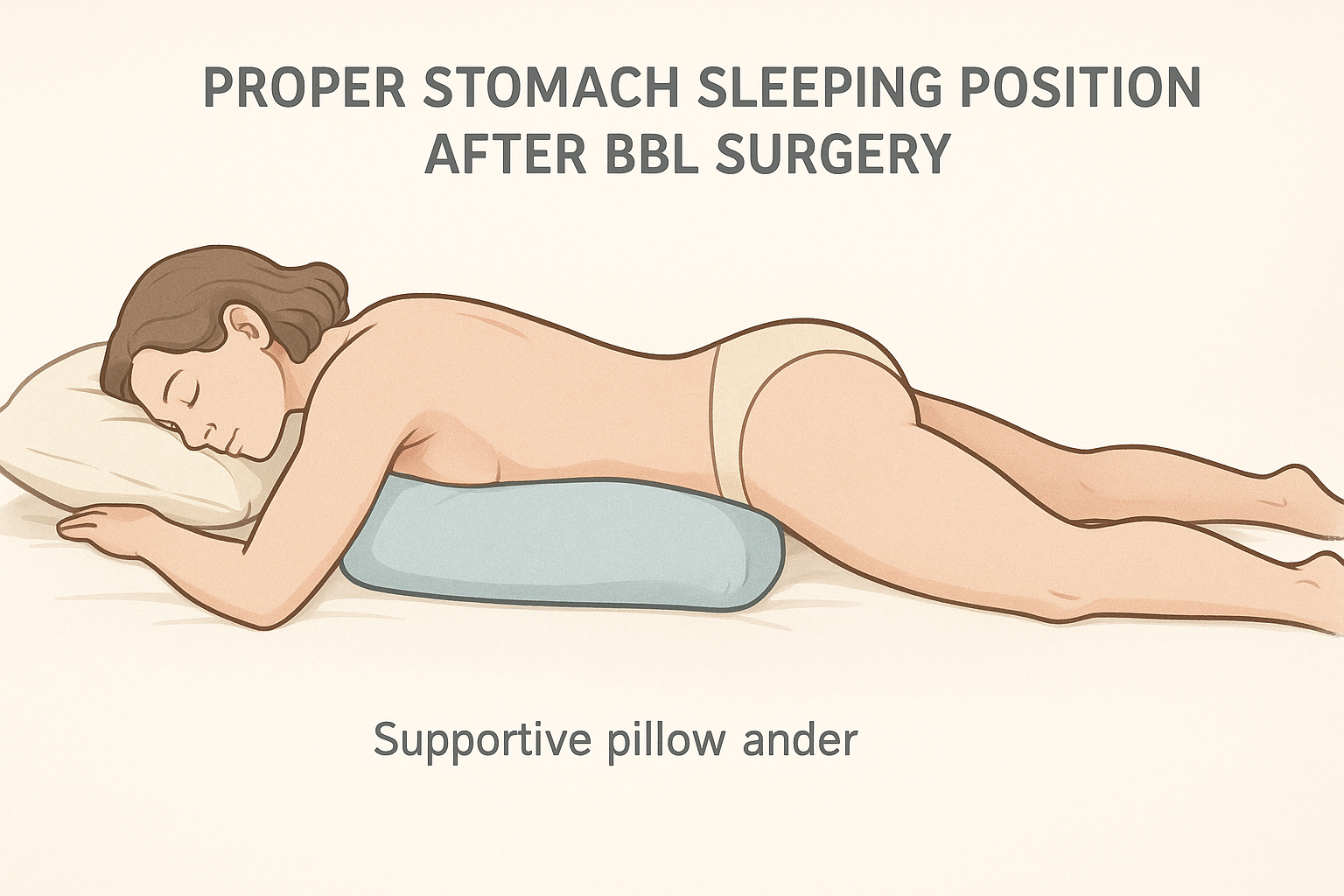Undergoing a Brazilian Butt Lift (BBL) is a popular way to enhance body contours by transferring fat to the buttocks for a fuller, more sculpted appearance. While the results can be transformative, the recovery process plays a critical role in achieving the best outcome. One of the most important aspects of recovery is how you position your body, especially when sleeping.
Applying pressure to the buttocks too soon after surgery can compromise the survival of the transferred fat cells, potentially affecting your results and causing discomfort. That’s why understanding the correct way to lie down after a BBL is essential for healing properly and maintaining your new shape.
In this article, we’ll guide you through safe and effective ways to lay down after a BBL, offering practical tips to help you rest comfortably while protecting your surgical results.
How to Sleep Better After a BBL: Best Tips
Sleeping well after a BBL is essential for healing and maintaining your results—here are a few gentle tips to help you rest safely and comfortably.
Avoid Lying on your Back
After a BBL, it’s important to avoid lying directly on your back, especially during the early stages of recovery. Applying pressure to the buttocks too soon can compromise the transferred fat cells and affect your final results.
Sleep on your Side
Sleeping on your side is one of the safest and most recommended positions during BBL recovery. To further reduce pressure on the lower body, consider placing a pillow between or beneath your legs. This added support helps maintain proper alignment and minimizes strain on the surgical area, promoting a more comfortable and effective healing process.
Sleep on your Stomach
For many BBL patients, sleeping on the stomach is a safe and effective way to avoid placing pressure on the buttocks, especially if the abdomen wasn’t treated with liposuction. This position helps protect the newly transferred fat and allows for more comfortable rest during recovery.
If you're used to sleeping on your back, consider practicing stomach sleeping a week or two before your procedure. Getting familiar with the position ahead of time can make your post-op nights more manageable.
Pillows and BBL Beds for Added Support
If you find it challenging to avoid sleeping on your back, using a BBL pillow can be a helpful alternative. Place the pillow under your thighs and a regular pillow under your lower back to relieve pressure on your buttocks and reduce strain.
BBL beds with a special cut-out also provide excellent support by allowing your buttocks to rest without direct pressure, promoting more comfortable sleep during recovery.
Related: BBL Sleeping Positions
Why is a Good Night’s Sleep Important After a BBL?
Getting good sleep after a BBL is more important than most people realize. Your body does most of its healing while you rest, which helps reduce swelling, supports fat cell survival, and keeps your energy up during recovery. Quality sleep also boosts your immune system, helping you avoid complications and feel better overall.
When can you sleep normally after BBL?
Most patients can return to normal sleeping positions around 6 to 8 weeks after surgery. By this time, the transferred fat cells have typically stabilized, and swelling and bruising have significantly reduced. However, every recovery journey is different. Always follow your surgeon’s guidance and attend your follow-up appointments to ensure it’s safe to resume sleeping on your back.
Benefits of Sleeping Correctly After a BBL
Sleeping the right way after your BBL is key to protecting your results and supporting a smooth recovery. Proper positioning helps reduce pressure on the surgical areas, lowers the risk of complications, and keeps discomfort to a minimum. It also ensures the newly shaped buttocks heal evenly without being flattened or distorted.
Here’s how correct sleeping helps:
-
Minimizes post-op pain
-
Supports faster healing
-
Maintains the shape of your results
-
Reduces the chance of complications
Tips to Heal Safely and Comfortably
Follow Your Surgeon’s Advice
Your surgeon understands the specifics of your procedure and overall health. Always follow their post-op instructions and attend all scheduled follow-up appointments to ensure proper healing.
Wear Compression Garments
Wearing your compression garment as directed helps manage swelling, improves circulation, and provides support to the treated areas during recovery.
Take Your Medication as Prescribed
Use prescribed medications such as pain relievers or antibiotics to help manage discomfort, reduce inflammation, and prevent infection.
Eat Healthy and Stay Hydrated
Fuel your body with nutrient-rich foods and drink plenty of water. A balanced diet supports tissue repair and speeds up recovery.
Avoid Smoking and Alcohol
Both smoking and alcohol can interfere with circulation and slow down healing. Avoid them to reduce the risk of complications and support fat retention.

